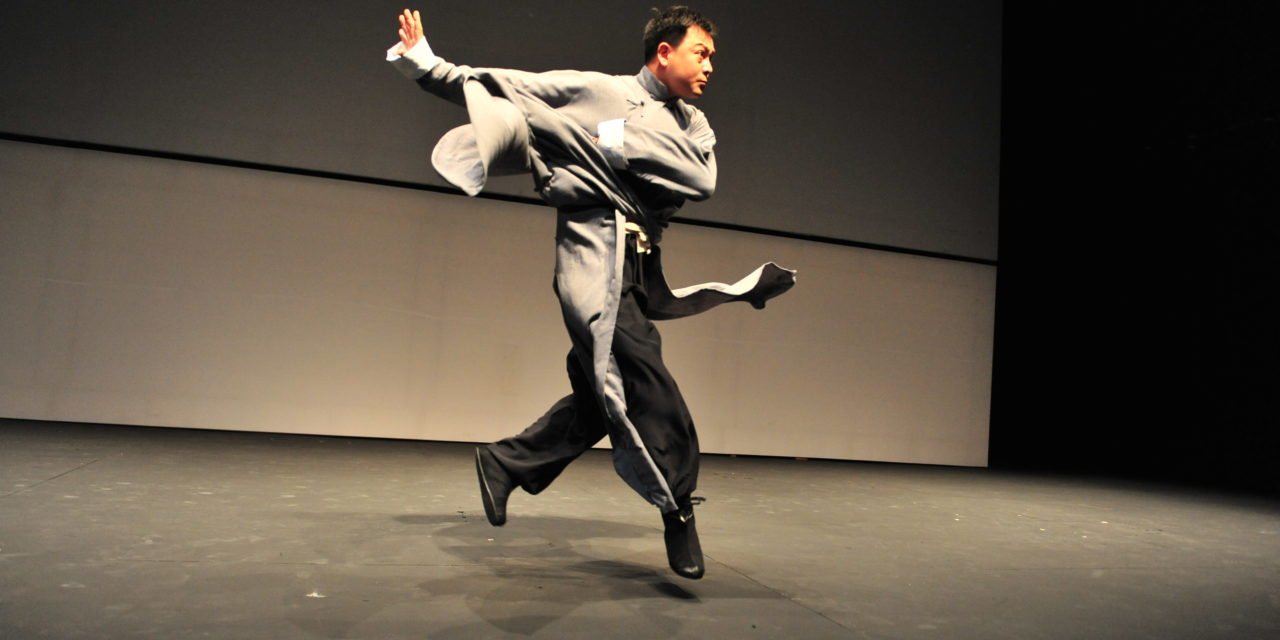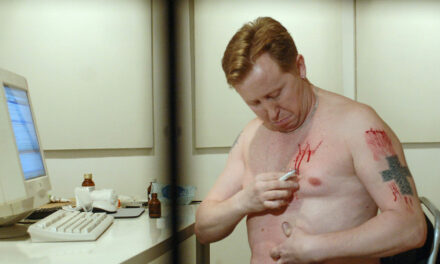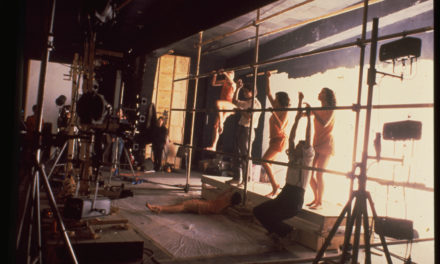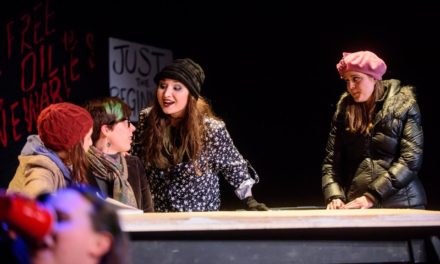I had long heard of Director [Danny] Yung’s trilogy The Outcast General, Tears of Barren Hill, and Flee by Night. I was always intrigued by the fact that people seem to have mixed feelings about these plays, mainly resting on Yung’s approach to devising and developing traditional theatre in a contemporary context. I have watched “modernized” plays that adopt the idea of grandeur by featuring extravagant and elaborated sets and costumes, and grand symphonies in the play that turned me off completely. Far from enriching the play, this superficial grandeur that is believed to draw audiences does nothing to add to the originality and unique charm of the simple style of traditional Chinese theatre/opera. Other modern works I have watched that employed traditional Chinese opera remained at the level of storytelling, without any reflection on why to tell, how to tell, and whom to tell.
In late May 2015, I had the pleasure of watching Yung’s latest edition of the play Flee by Night, originally initiated by an invitation to perform in Oslo in 2004, at the Hannover Theater Festival (KunstFestSpiele Herrenhausen). Director Yung managed to develop a 20-minute wusheng (a male actor playing a martial role in traditional Chinese theatre) solo excerpt into a 1.5-hour full-length performance. If I were to comment on Flee by Night solely from the perspective of “experimental Chinese theatre/opera” I would fall into a common critical fallacy since the assumption behind it is that Chinese theatre/opera is the core and takes the lead in the play. In fact, Flee by Night transcends the dualism of “tradition vs. modern” or “China vs. West”. In this case, the question is: how should we read Yung’s intention of turning a classic wusheng solo into a “play in rehearsal”? [1]
Yung made us feel as if we were attending a rehearsal, witnessing the making-of creative process and how the play’s content and presentation were being “arranged”. [2] Most plays, including those mentioned above, are formulaic, seemingly following a routine that tries hard to please the senses of the audience through orchestrating stage design, performance, music, and images together into a symphony of abundance. This kind of play is more or less made for the sensational enjoyment of the audience. However, more is less in this case. With a different approach, Yung deconstructed and re-constructed stage elements such as images (including space and performance), words/text, and sound, attempting to expose the creative processes – the performance arrangement and the development of the narrative structure – to the audience. Flee by Night is not only an experiment in (re-)learning the ways of seeing, listening, reading, and (story)telling, but also in showing how one can understand what happens in the play/story.
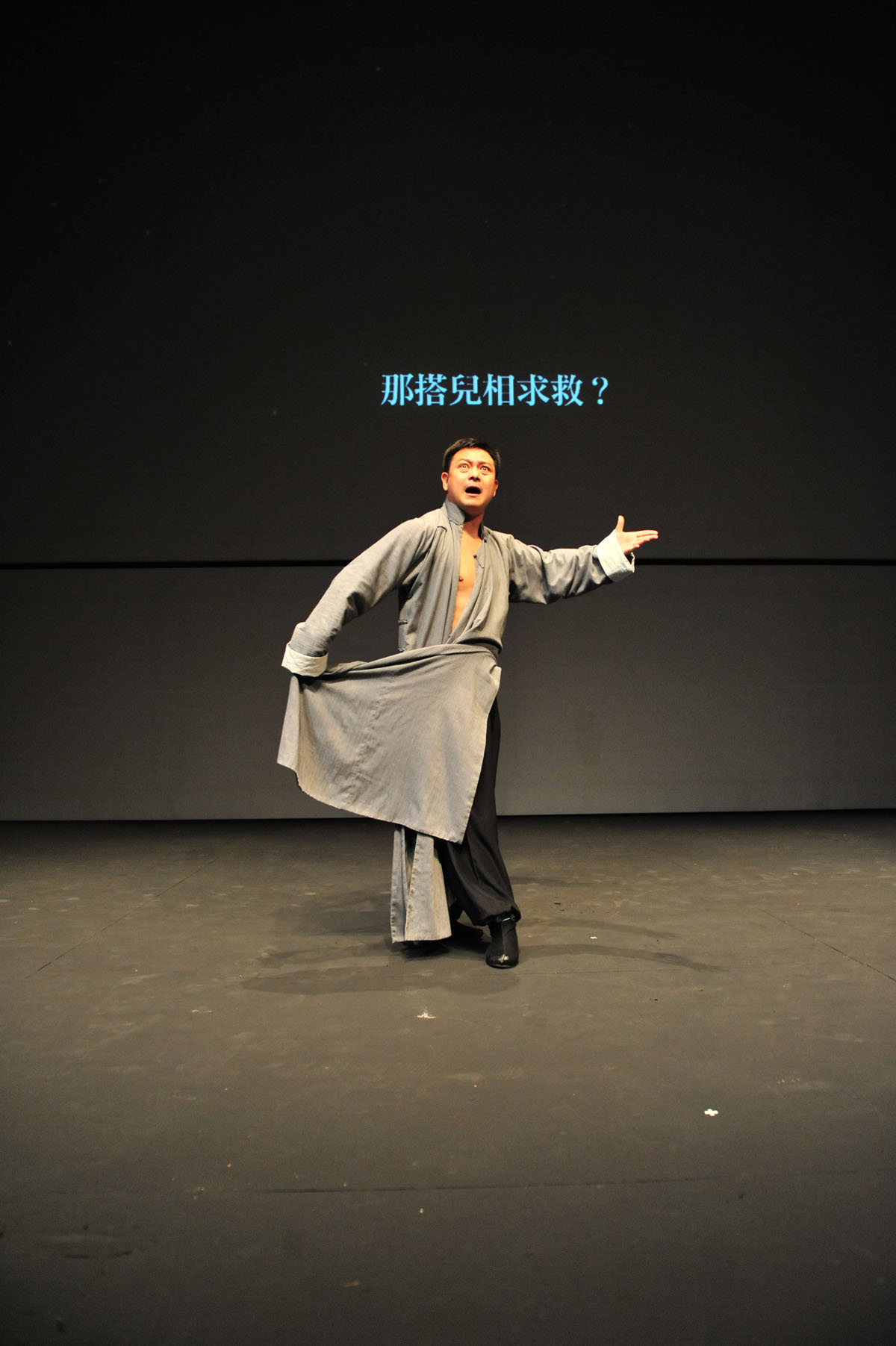
Kunqu performer Ke Jun in Flee By Night, directed by Danny Yung. Credits: Zuni Icosahedron.
Upon entering the theatre, the audience was exposed to a stage-on-stage mise-en-scene – a mini-stage built on the stage that reminded me of a laboratory, or an islet. As the title suggests, one would expect darkness in Flee by Night, yet the stage was well-lit, with white vinyl flooring, a white backdrop, and a white table. A dark line ran horizontally across the backdrop cutting it into two parts, which created a sense of segmentation.
The play started with a stagehand arranging the space. Neatly attired, the stagehand wore a gray gown, thin-soled boots, and no makeup. He entered the stage and placed two modern-design chairs on it. He carefully adjusted the positions and angles of each chair again and again. One line of development throughout the play was carried out by four performers appearing as stagehands and organizing the space and props as if they were rehearsing and undergoing a process of thinking, experimenting, overturning, and discovering. This way, the audience was made aware of such questions as: Why is the chair placed that way? What does the relationship between the two chairs imply? What is the relationship between the sitting man and the standing man? What difference does it make to let the performers face or show their backs to the audience? Why is the table downstage? What scenario does the table establish? Why is the gown left on the chair? And so on.
While the “one table, two chairs” set is used in any traditional Chinese opera, Yung provided an opportunity to rediscover the elements that constitute the stage/performance: What is the role of the stagehand? What makes the theatre? Yung started with the basics of the stage – spatial arrangements – seeking for the standpoints and perspectives in the narrative that provide the audience with an entry point to the play.
The stagehand moved quietly as if rehearsing, or perhaps recalling what he used to see on the stage. Does his scholarly look belong to [Flee By Night’s] playwright Li Kaixian? Was he recalling his own experiences, or the character Lin Chong’s? When he took off his gown and boots, with Henry Purcell’s music playing (the same piece of music was played several times, sung by a female voice) the actor changed into Lin Chong in the twinkling of an eye – from a spectator to a character in the play. The costume of Lin Chong looked like a rehearsal costume: a coarse-cloth gown, black trousers, and a red belt. Amidst cool colors like black, white, and gray, the red belt stood out as the only bright color. “Oh, loneliness,” sang the female voice in Henry Purcell’s music. The voice, along with the performers’ movement, showed us the significance of the color red, representing the bonds between Lin Chong and his mother, wife, and hometown. The kunqu [Kun Opera] performer playing Lin Chong did neither sing nor speak, but the visuals were more informative than any words. In the original play, it is too late for Lin Chong to say goodbye; reluctantly, he has to give up everything and flee – such is his destiny.
While witnessing the performer sitting, standing, walking, observing, writing, going on-and-off stage, and re-arranging the stage elements, the audience might ask: Who is he? Is he playwright Li Kaixian? Actor Ke Jun? Character Lin Chong? A scholar? Where is this place? A rehearsal room? A stage? Li Kaixian’s study? Lin Chong’s fleeing destination?
Yung employed multiple storylines to present the relationship between the two kunqu performers [Ke Jun and Yang Yang] at different times, and their relationship with the other two performers in the play. They wore either a gown or a suit, suggesting that they were Lin Chong in two different generations, and doubles of the playwright and the character. (Isn’t Lin Chong’s destiny a projection of Li Kaixian’s own?)
Through a constant flow of inquisitive questions, Yung inspired the performers to explore the process of constructing their roles with different body movements. The performers started experimenting with variations of the wusheng’s body movements by deceleration, exaggeration, repetition, de- and reconstruction. The way movements were devised is consistent with the character’s state of mind; every move is filled with hesitation, struggle, and risk-taking. One performed with agitation and sorrow, while the other was dignified and dreary.
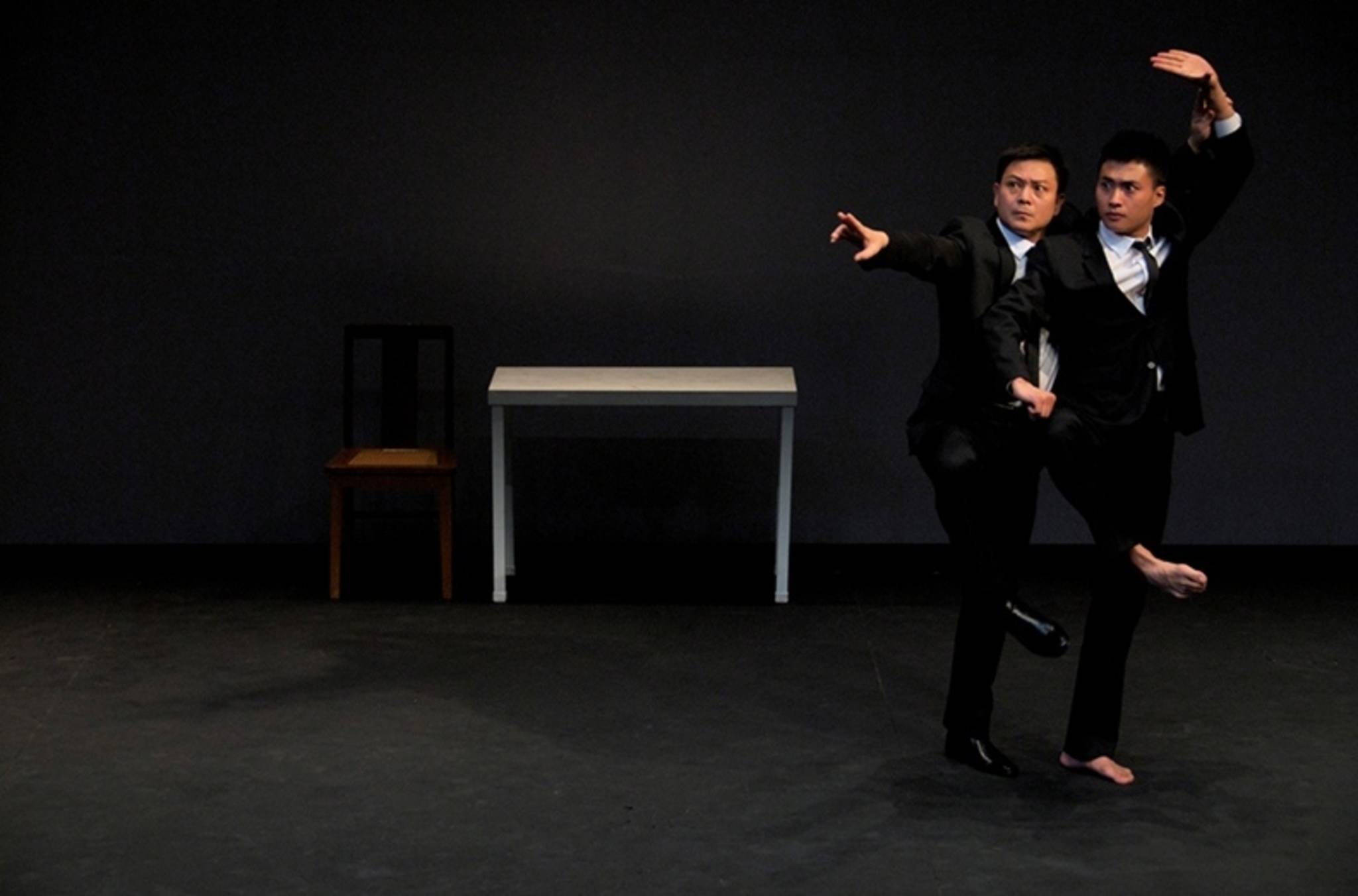
Kunqu performers Ke Jun and Yang Yang in Flee By Night, directed by Danny Yung. Credits: Zuni Icosahedron.
By eliminating the singing and recitation parts that are characteristic of kunqu, Yung moved beyond the dimension of sensational enjoyment to go deeper into the relationship between audience and performers in the theatre. Musician Qu Xiaosong once said: “With more notes comes less space, because space would be filled. With fewer notes come more space and capacity. One’s way of perceiving the world is changed when one’s way of listening changes; and then, one sees the world.” Director Yung deconstructed the integrated nature of kunqu performance into three elements: image, music, and words. On the one hand, the removal of singing and recitation reflects Yung’s minimalistic approach, along with the situation of deprivation that the character faces in the play. On the other hand, it reminds us of the powerful body language that makes singing and recitation unnecessary. Silence is also a kind of sound. In silence, the tension and energy of body language are expanded. Silence is another kind of sound. In silence, the body can be stretched to feel the energy of the movements. Grief and indignation that could not be expressed by words posed a great challenge to the performers, who were required to push their limits to achieve a higher level of their performance to maximize the infinite power of the minimalistic approach. The director also challenged the audience, who were to re-learn their ways of perceiving and reimagining what they see and hear on the stage; hear the silence, see the invisible. Grief and indignation, unspoken.
Yung reorganized sound and music by mixing alto vocals, train noise, drumbeat, sound effects, and kunqu chanting; he then fused the images and sound in a “counterpoint” manner – independent yet interdependent. For instance, Western-style opera and train noise were played when kunqu movements were displayed. Another example is a man sitting on the stage against a projected backdrop of snow effects when kunqu chanting was played. The alienating effect placed the theme of Flee by Night in a wider context in terms of space and time, transcending the division of ancient and modern as well as of East and West. This, again, brought great freedom to the performers and liberated their power of expression through various experimentations. With no singing and reciting, the poetic libretto was delivered through projections onto the backdrop. Some words came from the original script; some developed from Yung’s own reflections on the background and scenarios of the story, as well as in the past and the present. By making audiences read in the theatre, Yung intended to make them aware of the fact that a play is not only for watching and listening but also for reading. Reading can be transformed into the dark side of watching and listening. By the end, the meanings of watching, listening, reading, and speaking were deepened – a process I would call “fighting to change the world.”
Audiences were sitting in the dark — reading, watching and listening. We were experiencing how the play would go on, how the unspeakable, and the story outside the story, was told. Is Lin Chong’s destiny also ours? Are the stagehands us? Is the dilemma of the scholar our dilemma? Is the responsibility of the artist our responsibility? Are the director’s questions also ours? In the dark, we gradually turned what we read, watched, and listened to the reading, watching, and listening of ourselves. What we found was what the director handed to every one of us.
How to make a dialogue with the present in today’s theatre? How to interpret the classics? How to face traditional art? What is theatre in the context of globalization? What is the theatre for? Director Yung offered convincing answers through this play.
[1] I borrow French philosopher Jacques Ranciere’s notion of “film in action.”
[2] This is a quote from Yung.
Cao Kefei is a theatre director and playwright living and working in Berlin and Beijing. Works include On the Way, The Power of the Habit, Fire Face, Endstation – Beijing, Strindberg’s Love Letters, The Woman Trying to Destroy Ceremony, Riding a Rollercoaster Flying Toward the Future, Chang’e, as well as Together and In the Middle of the Sky, co-created with poet Duoduo.
This article was edited and abridged for publication in The Theatre Times. The original version, titled “How to Re-Learn Ways of Seeing, Listening, Reading, and (Story)Telling — Through ‘Flee by Night,’ a Contemporary Theatre Work by Danny Yung,” appears in Wang Xiaoying, Ke Jun, and Danny Yung, eds., Yi zhuo er yi – Yeben / One Table Two Chairs – Flee by Night (Nanjing: Phoenix Publishing, 2015). Republished with permission of Zuni Icosahedron.
Flee By Night – Production Credits
Script, direction and stage production: Danny Yung
Performers: Ke Jun, Yang Yang, David Yeung
Live percussion: Li Lite
Music: Steve Hui
Video: Benny Woo
Lighting: Mak Kwok Fai
Costumes: Barney Cheng
A Zuni Icosahedron production
Excerpts from Flee By Night will be performed in London on 9 September 2017, as part of the program “Flee By Night from the Traditional to the Contemporary: A Journey through the Art of Kunqu“
This post was written by the author in their personal capacity.The opinions expressed in this article are the author’s own and do not reflect the view of The Theatre Times, their staff or collaborators.
This post was written by Cao Kefei.
The views expressed here belong to the author and do not necessarily reflect our views and opinions.

